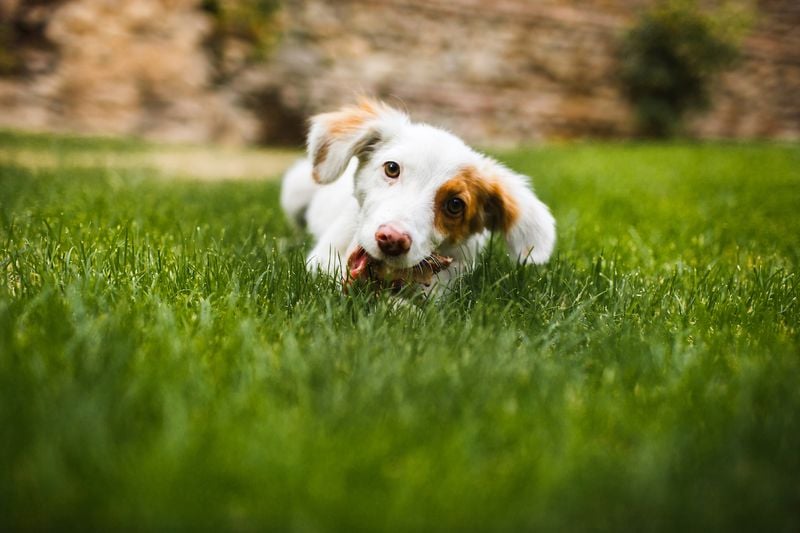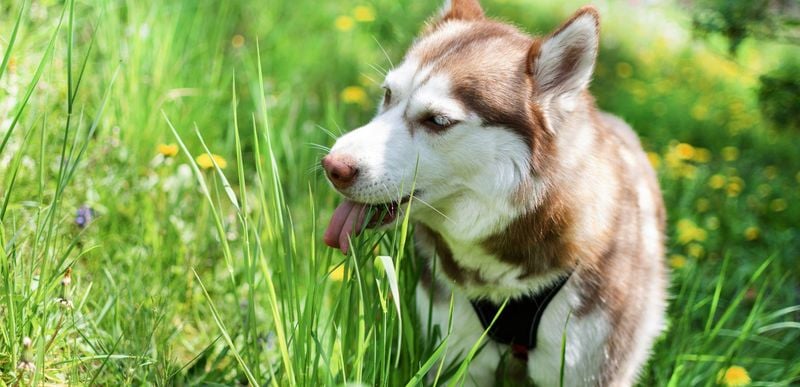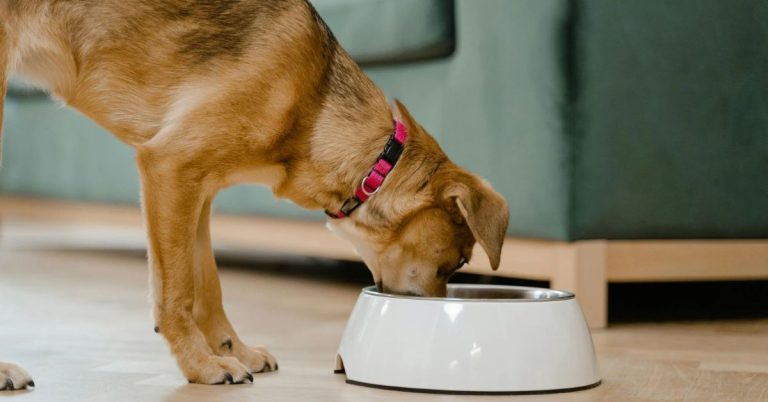10 Common Reasons Dogs Eat Grass—and What You Can Do to Stop It
Have you ever caught your furry friend munching on grass during backyard playtime or morning walks? You’re not alone. This quirky, leafy habit often leaves dog owners scratching their heads. Why would a well-fed, happy pup turn to your lawn for a snack?
As strange as it might seem, grass-eating is actually a fairly common behavior in dogs. While it may look unusual—or even alarming—it doesn’t always signal a major health concern. In fact, for many dogs, it’s just a normal part of their routine. But that doesn’t mean it should be ignored entirely.
Dogs chew grass for a variety of reasons, ranging from simple boredom to instinctual behavior inherited from their wild ancestors. Sometimes it’s a sign of digestive discomfort; other times, it’s just because they like the taste or texture. Understanding the root of this behavior can help you determine whether your pup’s grazing is harmless—or a symptom of something more serious.
In this guide, we’ll break down the 10 most common reasons dogs eat grass and offer practical, vet-informed tips on how to curb the habit if needed. Whether your dog is a casual nibbler or a full-on grazer, knowing what’s behind the behavior is the first step toward helping them stay happy, healthy, and out of your flower beds.
1. Natural Instinct Passed Down From Wild Ancestors
Your dog’s grass-eating habit might simply be coded in their DNA. Wild canines occasionally consumed plant material, and this ancestral behavior lives on in our domestic pets today.
Dogs aren’t strictly carnivores—they’re actually omnivores who sometimes seek out plants to round out their diet. This natural foraging behavior is perfectly normal, even if it seems strange to us.
To manage this instinctual behavior, provide dog-safe houseplants like wheatgrass for indoor pets to nibble. For outdoor dogs, designate a small area of pet-safe grass where they can safely indulge this natural urge without consuming chemically-treated lawn.
2. Soothing an Upset Tummy
Grass acts as nature’s remedy when your dog’s stomach feels off. Many veterinarians believe dogs instinctively eat grass to make themselves vomit when something doesn’t sit right in their digestive system.
The blade-like texture irritates the throat and stomach lining, often triggering the vomiting reflex. If your dog hurriedly gobbles grass and then promptly throws up, they’re likely self-medicating.
Monitor your dog’s diet closely and maintain regular feeding schedules to prevent digestive upset. Consider probiotic supplements formulated specifically for dogs, and consult your vet if grass-eating and vomiting become frequent—it could signal a more serious digestive issue requiring medical attention.
3. Fighting Boredom With Grass Snacking
Just like humans might mindlessly munch on snacks when bored, dogs sometimes turn to grass as entertainment. Without enough mental and physical stimulation, your four-legged friend might find grass-eating an interesting diversion.
You’ll notice this behavior more often in dogs left alone in yards for extended periods or those who don’t get enough exercise and playtime. The texture and taste provide sensory stimulation when nothing else exciting is happening.
Combat boredom-based grass eating by increasing daily exercise—aim for at least 30 minutes twice daily. Introduce puzzle toys, regular training sessions, and rotating toy collection to keep your dog’s mind engaged. A tired, mentally stimulated dog is less likely to resort to lawn munching.
4. Seeking Missing Nutrients In Their Diet
Sometimes grass consumption points to nutritional gaps in your dog’s regular meals. Dogs instinctively seek out what their bodies need, and grass contains fiber, chlorophyll, and certain minerals that might be missing from commercial dog food.
This behavior might increase during seasonal changes or if you’ve recently switched food brands. Your dog’s body is simply trying to balance its nutritional intake through available plant material.
Review your dog’s current diet with your veterinarian to ensure it provides complete nutrition. Consider high-quality dog foods with natural ingredients and appropriate fiber content. Some owners find success adding small amounts of steamed vegetables to meals or incorporating a vet-approved supplement regimen to address specific deficiencies that might be driving grass-eating behavior.
5. Grass Eating As An Attention-Getting Tactic
Smart dogs quickly learn which behaviors get a reaction from their humans. If you’ve shown concern, interest, or even just attention when your dog munches grass, they might repeat the behavior to engage with you.
Dogs thrive on human interaction and will sometimes develop unusual habits just to get you to notice them. Watch for patterns—does your dog start eating grass when you’re busy on your phone or working?
Redirect this attention-seeking behavior by establishing regular one-on-one time with your pet. Schedule short training sessions, play breaks, and cuddle time throughout the day. When you catch your dog eating grass for attention, avoid reacting dramatically—instead, calmly redirect to an appropriate toy and reward the positive alternative behavior.
6. The Simple Pleasure Of Taste And Texture
Sometimes the explanation is delightfully simple—some dogs just enjoy the flavor and feel of grass. Fresh spring grass has a sweet taste and juicy texture that many dogs find appealing, especially after rain when moisture enhances the flavor.
You might notice your dog being selective, choosing tender new shoots over tougher mature grass. This preference suggests they’re making a taste-based choice rather than addressing a medical or behavioral need.
For dogs who genuinely enjoy grass, grow pet-safe wheatgrass indoors as a healthy alternative. You can also offer dog-safe vegetables like cucumber slices or zucchini that provide similar crunch and moisture without the risk of pesticides or parasites found in outdoor grass. Some pet stores now sell special “grazing boxes” specifically designed for dogs who enjoy plant material.
7. Copying Other Dogs In The Household
Dogs are remarkably social animals who learn by watching others. If one dog in your home starts eating grass, don’t be surprised when others join in—they’re just following the pack leader’s example.
This social learning happens quickly and can spread to dogs your pet meets at the park or on walks. Many dog behaviors, both good and bad, develop through this monkey-see-monkey-do process.
Address grass-eating in all household dogs simultaneously for best results. Train and redirect the behavior consistently across all dogs, regardless of which one started it. Provide alternative activities the dogs can enjoy together, like tug toys or puzzle feeders, that satisfy the social aspect of shared behavior without resorting to grass consumption.
8. Natural Defense Against Internal Parasites
One fascinating theory suggests grass-eating might be a primitive parasite control mechanism. The fiber in grass may help move intestinal parasites through the digestive system more quickly, reducing their impact on your dog’s health.
Wild canines naturally consume plant material that helps scrape their intestinal walls clean. While modern dogs receive parasite prevention medications, this ancestral behavior persists as a biological defense mechanism.
Maintain regular deworming schedules with your veterinarian to eliminate the need for this natural remedy. Choose broad-spectrum parasite control that addresses multiple types of internal parasites. If your dog suddenly increases grass consumption, consider having a fecal sample checked—it might indicate an active parasite infection requiring specific treatment beyond their normal preventative care.
9. Anxiety Relief Through Repetitive Chewing
For some dogs, grass-eating serves as a coping mechanism during stressful situations. The repetitive motion of nibbling and chewing releases endorphins that help calm an anxious mind, similar to how humans might bite nails or twirl hair when nervous.
Watch for patterns in your dog’s grass consumption—does it increase during thunderstorms, when visitors arrive, or when you’re preparing to leave? These situational triggers suggest anxiety might be driving the behavior.
Address the underlying anxiety rather than just the grass-eating symptom. Create safe spaces in your home where your dog can retreat during stressful events. Consider anxiety wraps, calming pheromone diffusers, or background music specifically designed for dogs. For severe cases, consult with a veterinary behaviorist about appropriate anti-anxiety medications or supplements that might help reduce stress-related grass consumption.
10. Hunger Signals Between Regular Meals
Empty stomach sensations might drive your dog to grass as a filler between scheduled feedings. The grumbling, acidic feeling of hunger can be uncomfortable, and grass provides something to temporarily satisfy that empty stomach.
Dogs on calorie-restricted diets or those fed just once daily are particularly prone to this behavior. Their biological clock might signal hunger hours before their next scheduled meal, leading them to seek alternatives.
Consider splitting your dog’s daily food allowance into smaller, more frequent meals throughout the day. This helps maintain more consistent blood sugar levels and prevents the empty-stomach discomfort that drives grass consumption. For dogs on weight management programs, low-calorie vegetables like green beans can provide satisfying volume without excess calories between regular meals.
















